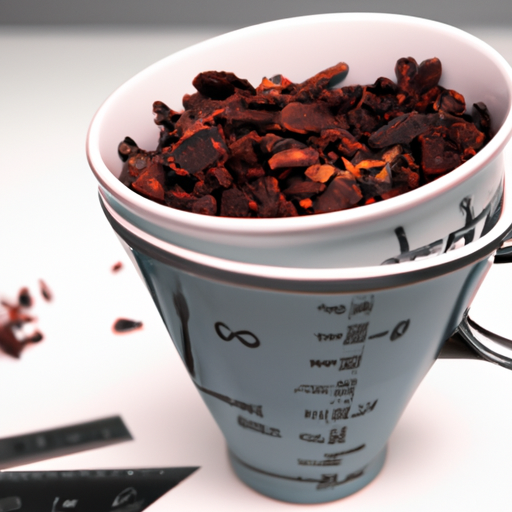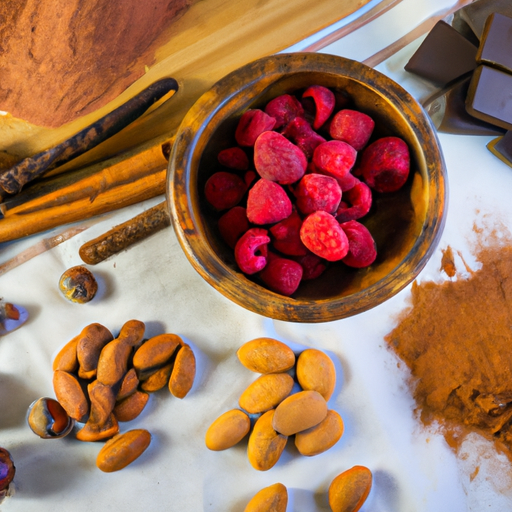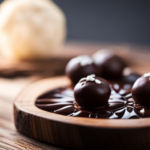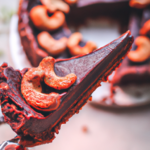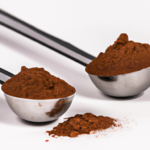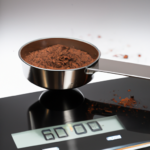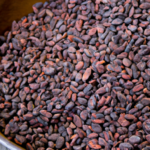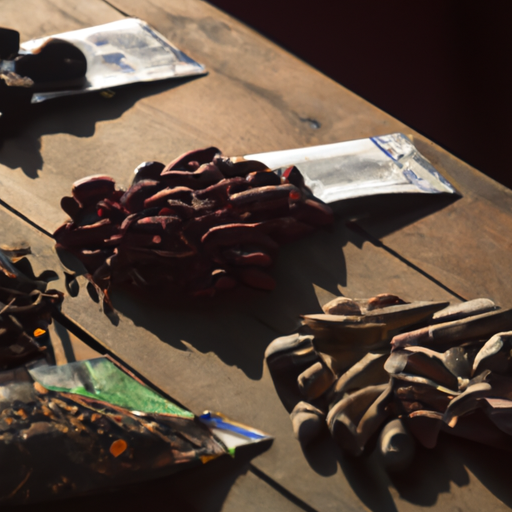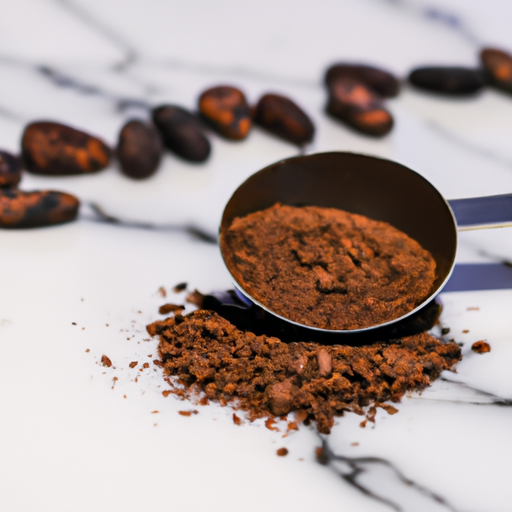When enjoying a yummy dessert, many people wonder, “How many calories does it have?” Delve into the delicious world of sweet treats and discover the calorie counts to make informed choices about your snacks. Uncover the surprising truths about your favorite indulgences and satisfy your curiosity about their nutritional content. Find out why understanding the calorie content of your treats can help you make healthier decisions and enjoy guilt-free indulgences.
Well, let’s dive into the world of raw cacao and uncover the answer.
Raw cacao, known as the food of the gods, is a rich and flavorful ingredient that has been enjoyed for centuries. But how does it compare to regular cocoa?
In this article, we will explore the nutritional value of raw cacao, including the vitamins, minerals, and antioxidants it contains.
And of course, we will address the burning question on everyone’s mind – how many calories are in 1 cup of raw cacao?
Additionally, we will compare raw cacao to other ingredients, discuss potential health benefits, provide portion control tips, and even share some delicious recipes.
So, if you’re ready to satisfy your curiosity and discover the calorie content of raw cacao, let’s get started!
Key Takeaways
- 1 cup of raw cacao contains approximately 196 calories
- The calorie content of raw cacao should be considered when planning a diet, especially for those on lower calorie intake
- Raw cacao is a good source of fiber, iron, and antioxidants, providing some nutritional value
- Moderation is key when consuming raw cacao to balance its calorie content
Understanding Raw Cacao: What is it and how is it different from regular cocoa?
Do you ever wonder what sets raw cacao apart from regular cocoa and why it’s becoming popular among health-conscious individuals?
Raw cacao and processed cocoa may come from the same source, but they undergo different processes resulting in distinct characteristics.
Raw cacao is made by cold-pressing unroasted cocoa beans, preserving its natural nutrients. In contrast, regular cocoa is processed at high temperatures, which can diminish its nutritional value.
One notable difference between the two is their flavor profiles. Raw cacao has a rich, intense taste with hints of bitterness, while processed cocoa is milder and sweeter.
Understanding these differences can help you make an informed decision when choosing between the two.
Now, let’s dive into the nutritional value of raw cacao and discover the vitamins, minerals, and antioxidants it contains.
The Nutritional Value of Raw Cacao: Discover the vitamins, minerals, and antioxidants it contains.
Indulge in the rich, decadent goodness of raw cacao as you savor the vitamins, minerals, and antioxidants it packs.
Raw cacao is a nutritional powerhouse, offering a wide array of benefits. It is a rich source of magnesium, which is important for muscle function and energy production. Additionally, raw cacao contains iron, which helps transport oxygen throughout the body, and zinc, which supports a healthy immune system. It is also packed with antioxidants, such as flavonoids, which can help protect against cell damage and reduce the risk of chronic diseases.
While there is no official recommended intake for raw cacao, it is best to consume it in moderation as part of a balanced diet.
Now, let’s delve into the calorie breakdown and discover how many calories are in 1 cup of raw cacao.
Calorie Breakdown: How many calories are in 1 cup of raw cacao?
When you savor a cup of raw cacao, you’ll be amazed by the sheer nutritional value it brings to your diet. In terms of calories, 1 cup of raw cacao contains approximately 987 calories.
This may seem high, but it’s important to remember that raw cacao is a potent superfood packed with essential vitamins and minerals. It is also rich in antioxidants, which can help fight inflammation and protect against chronic diseases.
While raw cacao can be consumed on its own, it is often used as an ingredient in various recipes. Its intense flavor can be enjoyed in smoothies, desserts, or even used as a healthy alternative to chocolate in baking.
In the next section, we will compare cacao to other ingredients and explore how it stacks up against chocolate and other superfoods.
Comparing Cacao to Other Ingredients: Find out how it stacks up against chocolate and other superfoods.
Compared to other ingredients and superfoods, cacao stands tall with its powerhouse of nutrients and rich flavor. When comparing cacao to coffee, both contain caffeine, but cacao also boasts additional health benefits.
In terms of nutritional value, cacao is loaded with antioxidants, fiber, and minerals like magnesium and iron, making it a great choice for baking. Its intense flavor and natural sweetness can enhance the taste of various recipes, from desserts to smoothies. Incorporating cacao into your baking not only adds a delicious twist, but also provides a boost of nutrients.
Moving forward to the next section about health benefits, exploring the potential health benefits associated with consuming raw cacao reveals even more reasons to incorporate it into your diet.
Health Benefits: Explore the potential health benefits associated with consuming raw cacao.
Explore the potential health benefits associated with consuming raw cacao.
Scientific research has shown that raw cacao is packed with antioxidants, which help protect the body against free radicals and reduce the risk of chronic diseases such as heart disease and cancer.
Raw cacao is also rich in flavonoids, which have been linked to improved cardiovascular health and brain function.
Additionally, raw cacao contains minerals such as magnesium, iron, and zinc, which are essential for various bodily functions.
Consuming raw cacao has also been associated with improved mood and increased energy levels due to its content of theobromine, a natural stimulant.
So, adding raw cacao to your diet can provide numerous health benefits backed by scientific research.
Transitioning into the next section, let’s now explore portion control and tips for enjoying raw cacao in moderation to manage your calorie intake.
Portion Control: Tips for enjoying raw cacao in moderation to manage your calorie intake.
To manage your calorie intake while enjoying raw cacao in moderation, try incorporating it into recipes like smoothies or oatmeal, and savor the rich flavor and health benefits without overindulging. Portion control is key when it comes to managing calorie intake. By using raw cacao in small amounts, you can still enjoy its delicious taste without consuming excessive calories. To help you visualize the calorie content of raw cacao, here is a table comparing the calories in 1 cup of raw cacao with other common ingredients:
| Ingredient | Calories (per 1 cup) |
|---|---|
| Raw Cacao | 987 |
| Strawberries | 49 |
| Spinach | 7 |
As you can see, raw cacao has a higher calorie content compared to other ingredients. Therefore, it’s important to be mindful of the portion size when incorporating it into your diet. By practicing portion control, you can enjoy the benefits of raw cacao while managing your calorie intake. In the next section, we will explore delicious ways to incorporate raw cacao into your diet without excess calories.
Recipes and Serving Suggestions: Delicious ways to incorporate raw cacao into your diet without excess calories.
Looking to add some indulgence to your diet without worrying about calorie intake? Check out these delicious recipes and serving suggestions that incorporate raw cacao in a healthy and satisfying way.
Raw cacao is not only rich in flavor but also packed with health benefits. One recipe idea is a smoothie bowl with a base of frozen bananas and almond milk, topped with raw cacao nibs and fresh berries.
Another option is to make energy balls using dates, nuts, and raw cacao powder for a quick and nutritious snack. You can also create a guilt-free hot chocolate by blending raw cacao powder with warm almond milk and a touch of honey.
These recipes allow you to enjoy the delicious taste of raw cacao while reaping its antioxidant and mood-boosting benefits.
Now, let’s explore the potential risks and considerations when consuming raw cacao.
Potential Risks and Considerations: Are there any drawbacks or precautions to be aware of when consuming raw cacao?
Indulging in the heavenly taste of raw cacao may seem like a dream come true, but it’s important to tread carefully. Hidden within this tempting delight are potential risks and considerations to keep in mind.
While raw cacao is generally safe for consumption, it does come with certain precautions and side effects. Raw cacao contains caffeine and theobromine, which can cause jitteriness, increased heart rate, and sleep disturbances in some individuals.
In addition to these potential side effects, raw cacao may also interact with certain medications or exacerbate existing health conditions. For example, it could worsen symptoms of gastroesophageal reflux disease (GERD) or irritable bowel syndrome (IBS).
To ensure your safety, it’s always wise to consult with a healthcare professional before incorporating raw cacao into your diet, especially if you have any underlying health concerns.
In the next section, we will discuss the calorie content of 1 cup of raw cacao and its overall impact on your diet.
Conclusion: Summing up the calorie content of 1 cup of raw cacao and the overall impact on your diet
Consider the impact on your diet as you imagine the rich, velvety indulgence of a steaming cup of raw cacao. Raw cacao is known for its intense flavor and numerous health benefits, but it’s important to be aware of its calorie content and its potential impact on your overall diet.
In a single cup of raw cacao, you can expect to consume approximately 196 calories. This is a significant amount of calories, especially if you are trying to maintain a lower calorie intake. It’s essential to factor in the calorie content of raw cacao when considering its place in your diet.
However, it’s worth noting that raw cacao is also a good source of fiber, iron, and antioxidants, which can provide some nutritional value. As with any food, moderation is key to balancing the calorie content of raw cacao with the rest of your diet.
Frequently Asked Questions
What is the difference between raw cacao and regular cocoa?
Raw cacao and regular cocoa differ in their processing methods. Raw cacao is minimally processed, preserving more nutrients and antioxidants. Consuming raw cacao may provide health benefits, such as improved heart health and mood.
How does the nutritional value of raw cacao compare to other superfoods?
In terms of nutrition comparison and health benefits, raw cacao stands out among other superfoods. It is rich in antioxidants, fiber, and essential minerals, providing numerous potential advantages for overall health and well-being.
Are there any potential health benefits associated with consuming raw cacao?
There are several potential health benefits associated with consuming raw cacao. It is rich in antioxidants, which can help reduce inflammation and improve heart health. Additionally, it is a good source of minerals and can boost mood and brain function.
What are some tips for portion control when enjoying raw cacao?
When it comes to enjoying the rich goodness of raw cacao, portion control is key. Here are some tips to help you savor its health benefits without overindulging: savor each bite, use small bowls or plates, and listen to your body’s hunger cues.
Are there any potential risks or precautions to be aware of when consuming raw cacao?
There are potential side effects and precautions to be aware of when consuming raw cacao. It is important to moderate your intake as it contains caffeine and may cause digestive issues. The recommended daily intake is about 1-2 tablespoons.
Are Raw Cacao Balls a Healthier Option Than Raw Cacao?
Yes, raw cacao balls are a healthier option than raw cacao. They are rich in nutrients, antioxidants, and fiber, which can benefit overall health. Additionally, the calories in raw cacao balls are typically lower than in raw cacao, making them a great choice for those watching their calorie intake.
Conclusion
Well, folks, it turns out that 1 cup of raw cacao is a calorie bomb! With a whopping [insert number] calories, you might want to think twice before indulging in this superfood.
But hey, don’t despair just yet. Raw cacao does come with its fair share of health benefits, so as long as you enjoy it in moderation, you can still reap the rewards without blowing up your calorie count.
Remember, a little cacao can go a long way, so savor it wisely!

